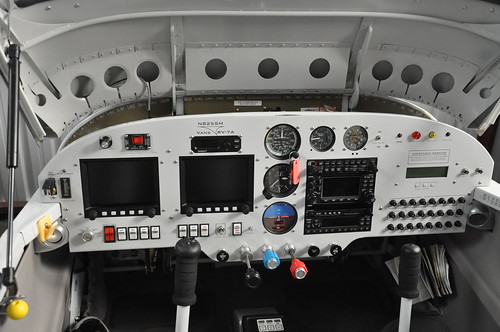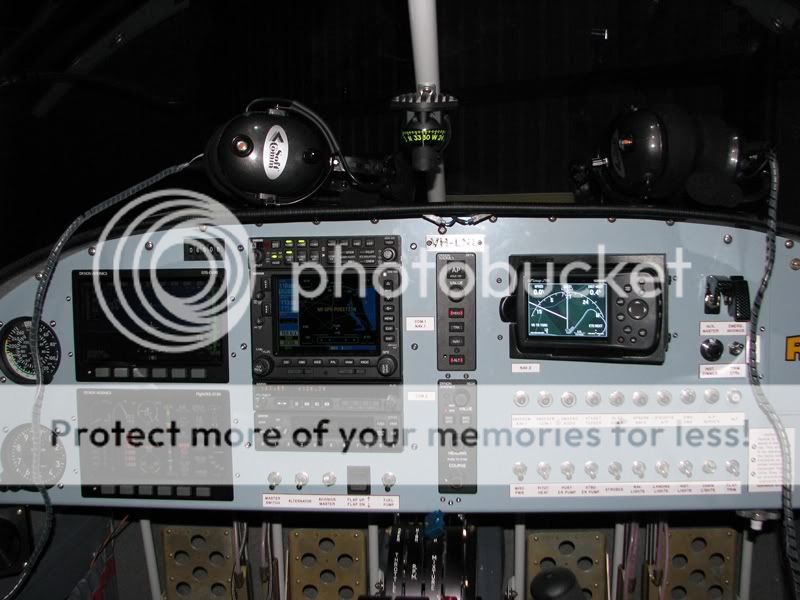Stein has a point that is worth more than 2 cents as usual, so lets look at this solution:
Is the clock/Chronometer required to be TSO? Yes, it?s mandatory for IFR in Brazil.Seems like most EFIS systems do these functions these days so that would save $400 and some weight.
For the pitot you can run a used one off of a cessna or some other airplane. Look for a PH502, you should be able to get one of these under $300 if you look around. It also need to be TSO. Will search for it.
Does the exhaust gas and cylinder head need to be separate gauges? Get that integrated into your efis (if your not using garmin.) No, it doesn?t. The analogic ones are for backup and I tought on integrated in EFIS, like AFS, etc, or even the JPI EDM-930 or the VP-200, that also checks the entire electrical system.
I don't see a gps in your panel that has IFR flight plans. I don't think the G500 can do that so your going to need a 430W or a 650 which is expensive. Yes, I realize that. For GPS aproaches I need a TSO GPS and for enroute GPS flying it can be a non TSO. A 2 axis is more than suficient. I?ll go for now with a non TSO.
About the audio panel. Does it need to be certified? Yes! Can you get away with a GMA-240 which is much lighter and cheaper, though it doesn't do the real fancy stuff. Is it TSO?
Do you need the trutrak auto trim? Can you trim the airplane yourself, that saves some money and weight. You?re correct! Will exclude it from the list.
Do you need the vertical power? It's a bit of money and fuses/breakers work just fine. I don?t know if it?s all that necessary. I think it adds a degree of safety, doesn?t it?
Do you need the Aspen Pro? Yes, for IFR enroute and aprouche flight with a TSO GPS. The pro couples with the AP. The EFD1000 Pilot is a bit cheaper and has the same features except it can't drive an auto pilot, but I don't know why you would want it to since it's basically a backup for your panel that meets your TSO horizon requirement. The ANAC agency told me it?s mandatory for IFR. Or 6 TSO gauges!
With these comments in mind I would look at this setup:
Sirs NV-2C-4000 Compass (blue lighted) - $225.00
Used Pitot tube $300
Comant Ci 120-400 VOR/LOC/GPS antenna - $997.00
Comant Ci 2480-400 VHF/GPS/XM antenna - $987.00
Comant Ci 105-6 DME/XPDR antenna - $273.95
Garmin 430W $7800
Garmin 240 $800
Garmin GTX-327 $1800
Trutrak Digiflight II VSGV - $3,850.00
AFS 4500 With engine board, AHRS board, and ARINC : $7,035
Aspen EFD1000 Pro Pilot $6,000
With this setup you still don't have mapping. You may want to get a garmin 696 or an Ipad or something since the mapping in the EFIS products aren't as good as the garmin solutions. It's hard to beat them at their own game. But I can buy the mapping from Garmin and use it together AFS, can?t I?
So toss in a GPS Map 696 for $2100.
With this setup you are at $32,200, but you have a pretty decent setup. You get synthetic vision, full engine monitor, a very nice IFR solution with geo-referenced approach plates, with the ability to drive the auto pilot from the AFS, 430W, or 696 (using serial), attitude in your AFS, Aspen, or autopilot (though it can't display it, just fly it), you get garmin maps on a separate dedicated screen.
Please keep in mind that option 1 you posted doesn't have any kind of an engine monitor, only gauges which won't give you warnings which I think is a great reason to have an EFIS. Also, I'm not sure if the Garmin setup in option 1 can do fuel calculations. You might want to look at that too. The VP-200 does it!
Other options you can look at are the GRT or skyview. GRT is a nice box and many run them an like them. They have all of the IFR features that the AFS has. The skyview doesn't have all of the IFR features yet and they force you to run their autopilot. It's not nearly as mature since it hasn't been flown on as many types as the TT nor has been around as long, but it may fly your airplane just fine. If going with experimental EFIS I?ll go with AFS or G3X.
Before deciding you should read through the threads on autopilots and see what you think.
Hope that helps,
schu






